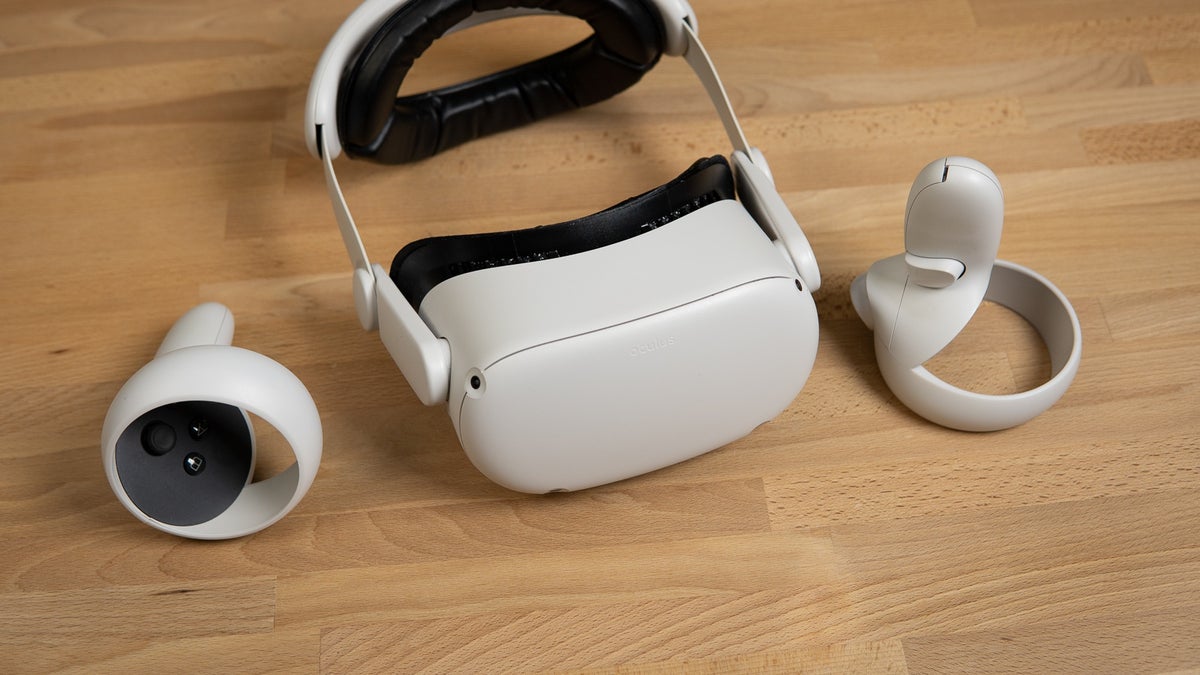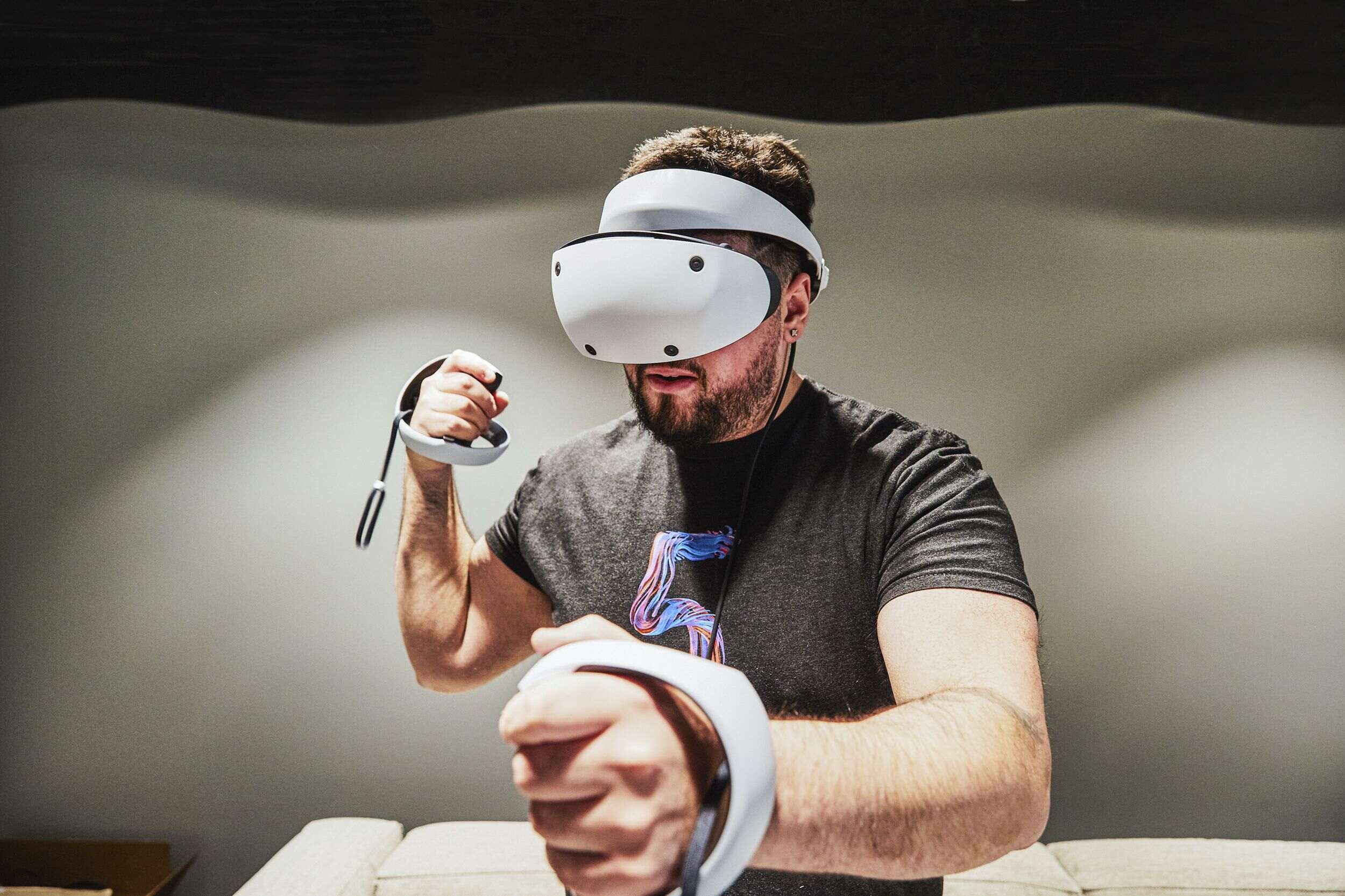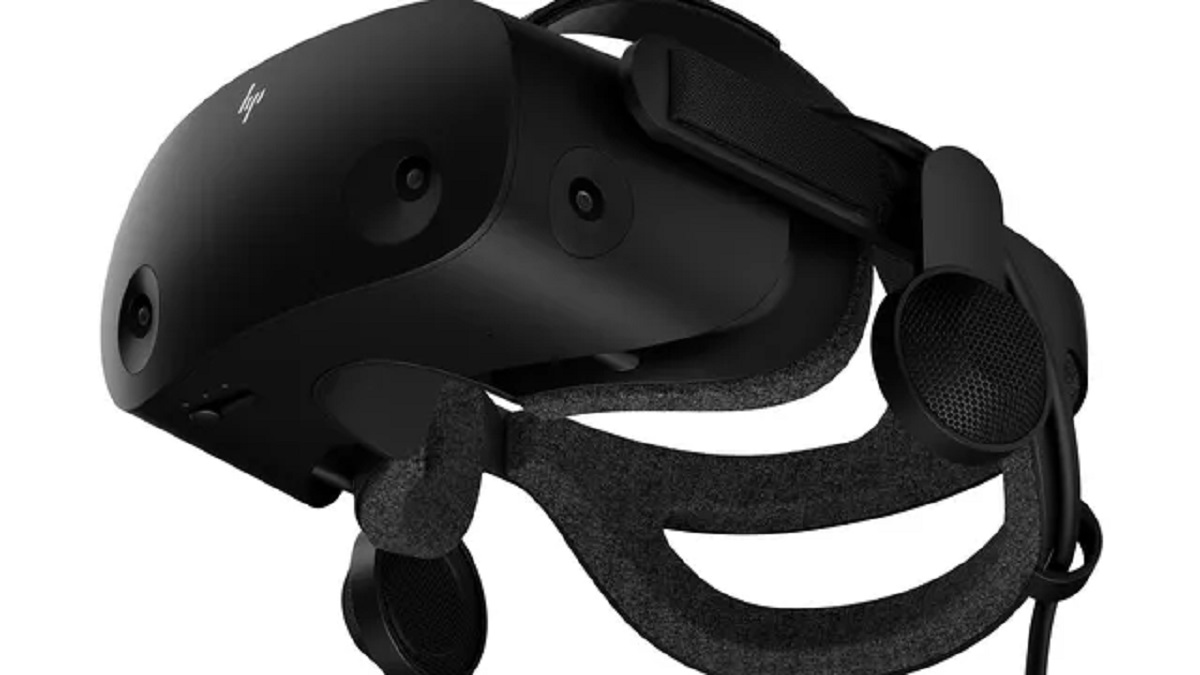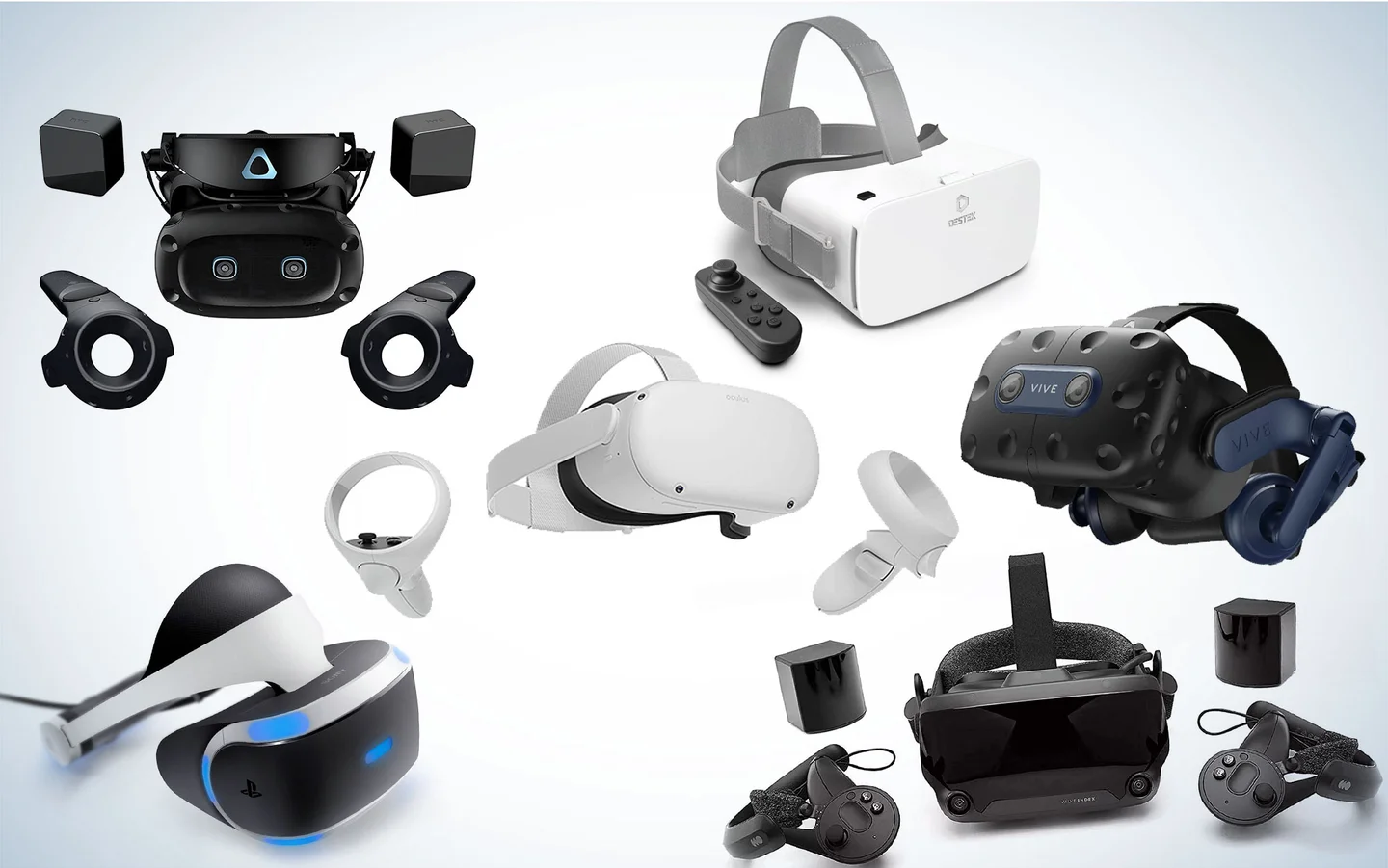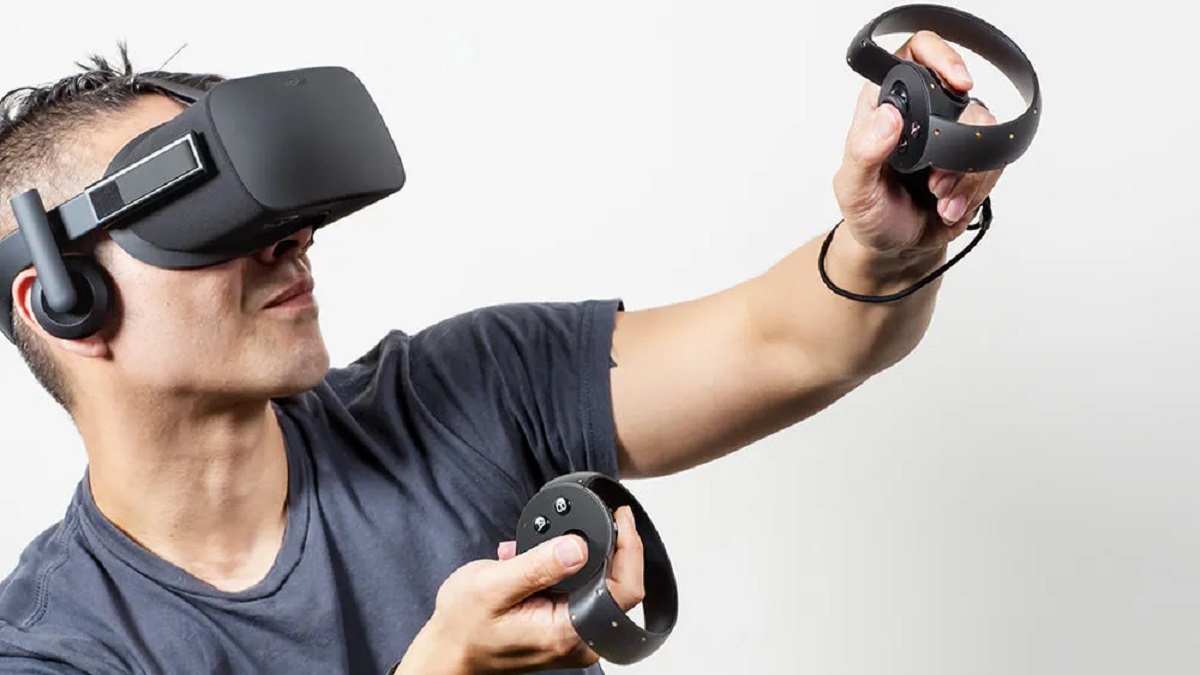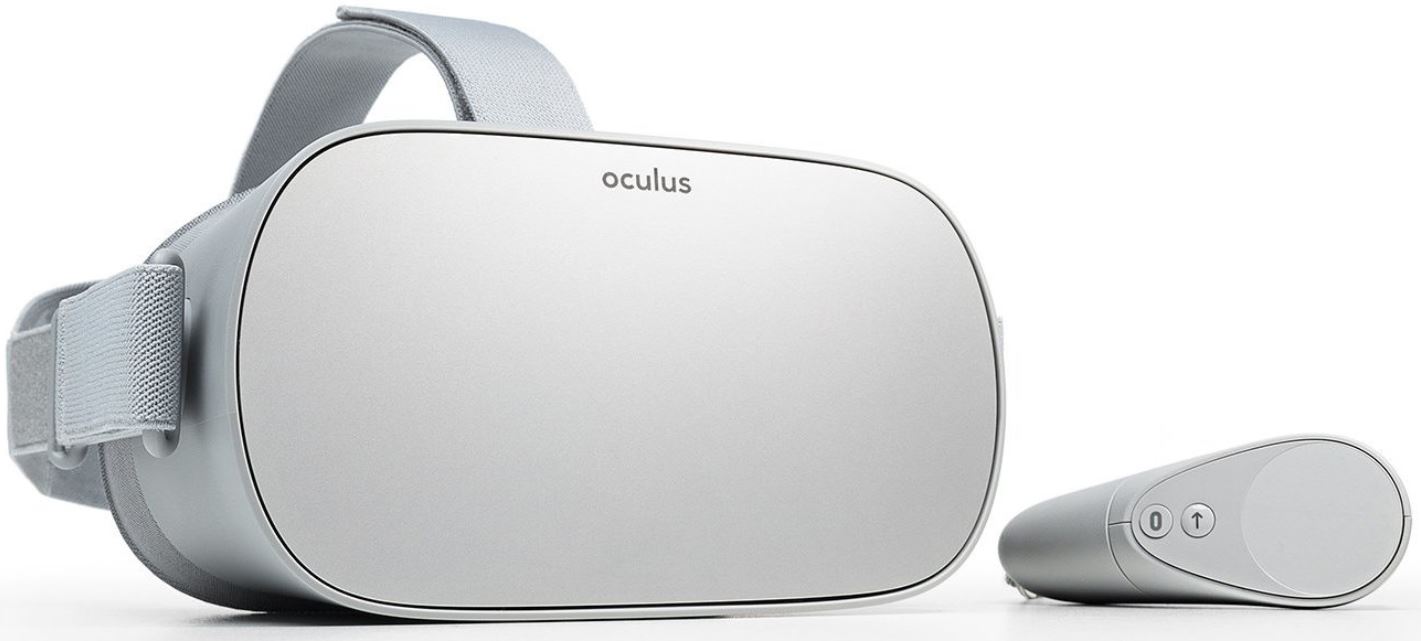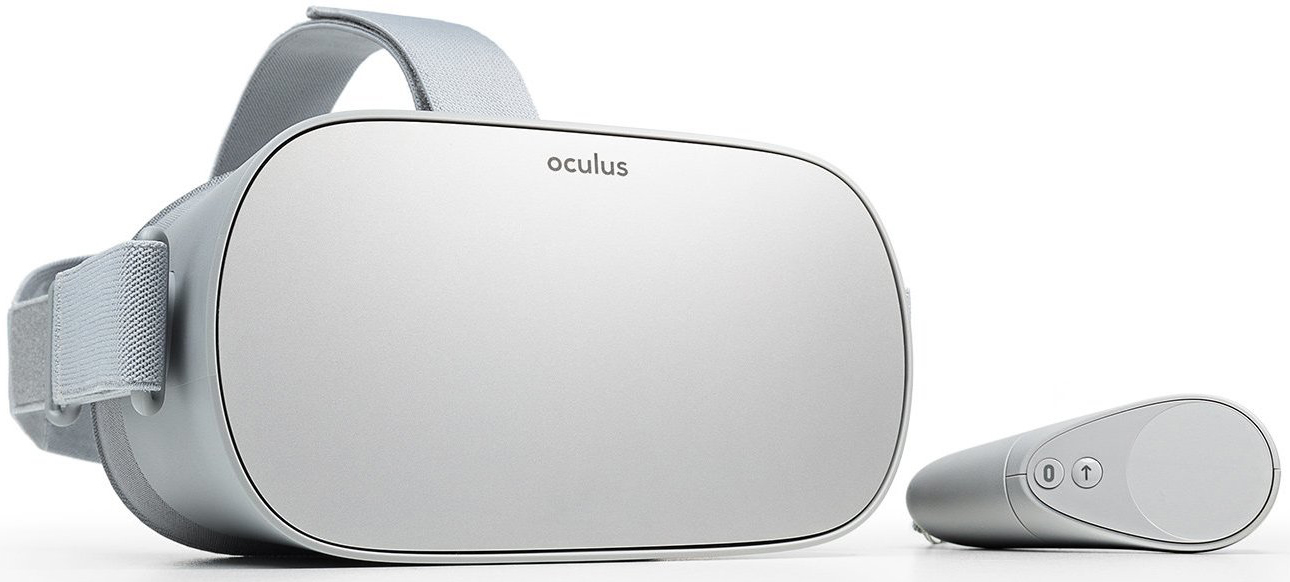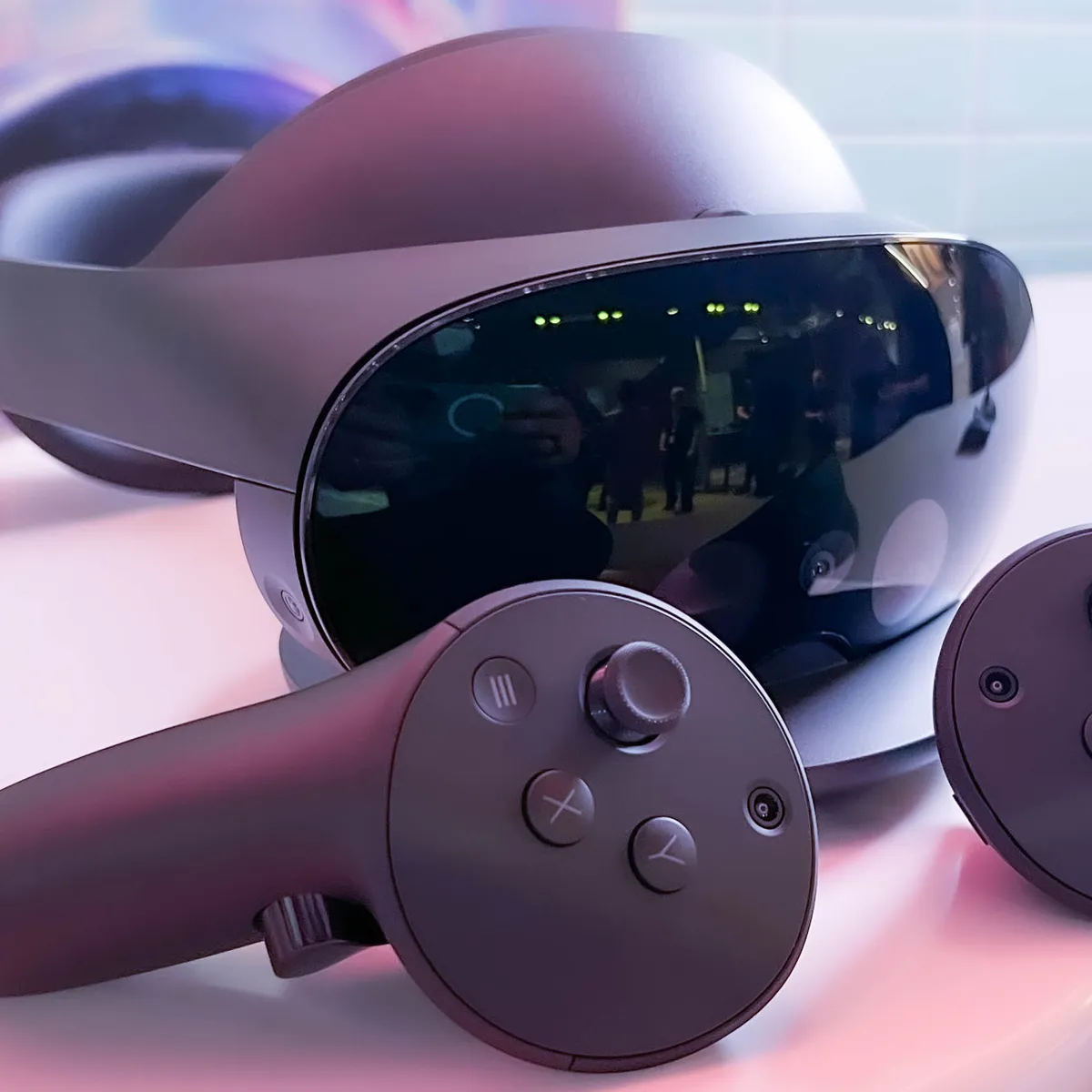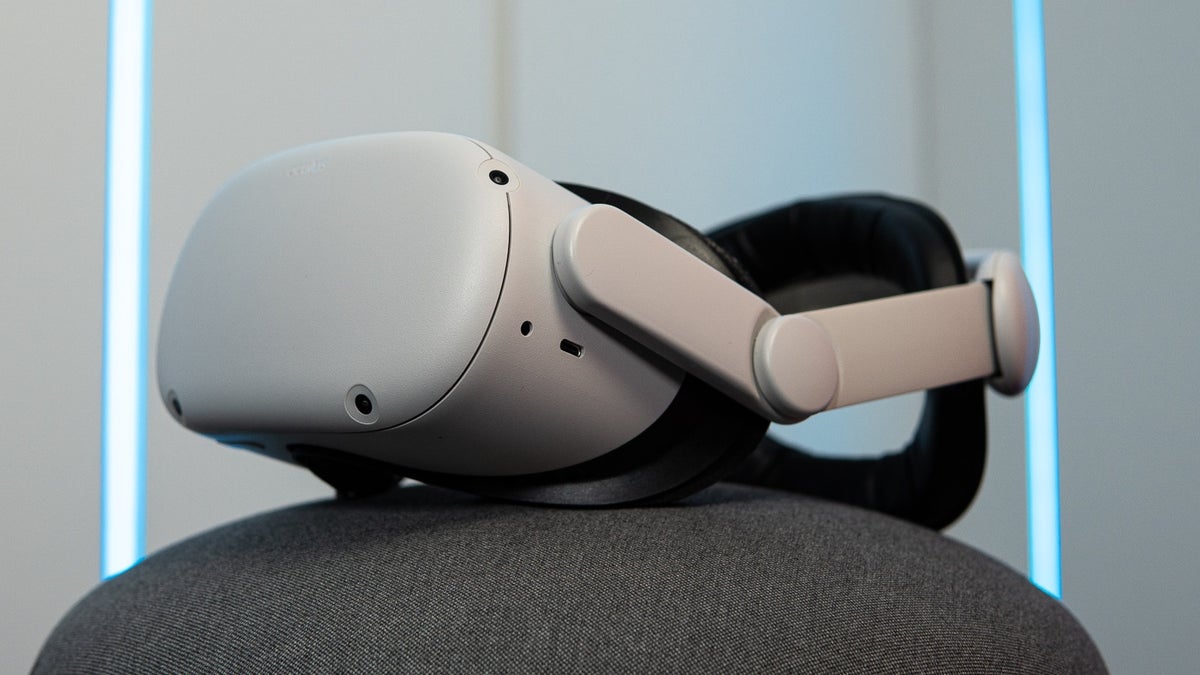Introduction
The Oculus Quest 2 has revolutionized the virtual reality (VR) experience, offering immersive gameplay and interactive entertainment. One of the key elements that contribute to the overall VR experience is audio. The audio quality can significantly enhance the sense of immersion, making it crucial for users to understand how to optimize their audio setup for the Oculus Quest 2 headset.
In this comprehensive guide, we will delve into the various audio options available for the Oculus Quest 2 and provide detailed instructions on how to connect your preferred headset to the device. Furthermore, we will explore the process of adjusting audio settings within the VR environment to ensure an optimal audio experience.
Whether you are a seasoned VR enthusiast or a newcomer to the world of virtual reality, understanding the intricacies of audio setup for the Oculus Quest 2 is essential for unlocking the full potential of your immersive gaming and entertainment experiences. Join us as we embark on a journey to uncover the best practices for achieving exceptional audio quality with your Oculus Quest 2 headset.
Let's dive into the fascinating realm of audio optimization for the Oculus Quest 2, where every sound comes to life in the virtual landscape, elevating your sensory engagement to new heights.
Understanding the Oculus Quest 2 Audio Options
The Oculus Quest 2 offers versatile audio options to cater to the diverse preferences of users, ensuring a customizable and immersive audio experience. Understanding these audio options is crucial for users to make informed decisions about their preferred audio setup. Let's explore the various audio options available for the Oculus Quest 2:
Built-in Speakers:
The Oculus Quest 2 is equipped with integrated speakers, providing a convenient audio solution for users who prefer not to use external headphones or earbuds. These built-in speakers deliver spatial audio, enhancing the sense of presence and immersion within the virtual environment. The spatial audio technology simulates 3D sound, allowing users to perceive audio cues and spatial awareness, thus enriching the overall VR experience.
3.5mm Headphone Jack:
For those who seek a more personalized and private audio experience, the Oculus Quest 2 features a 3.5mm headphone jack, enabling users to connect their preferred headphones or earphones directly to the headset. This option allows for the use of high-quality audio peripherals, catering to individual preferences for sound isolation and enhanced audio fidelity.
Wireless Bluetooth Headphones:
In addition to the 3.5mm headphone jack, the Oculus Quest 2 supports wireless audio connectivity via Bluetooth headphones. This wireless option provides flexibility and freedom of movement, eliminating the constraints of physical cables while delivering an immersive audio experience. Users can seamlessly pair their compatible Bluetooth headphones with the Oculus Quest 2, further enhancing the convenience and mobility of their VR setup.
Oculus Link for PC VR:
When utilizing the Oculus Link feature to connect the Quest 2 to a gaming PC, users have the option to leverage the audio output capabilities of their PC. This allows for the use of high-end gaming headsets or audio systems, expanding the audio options to encompass the full range of PC-compatible audio peripherals. By tapping into the audio resources of the connected PC, users can elevate their VR audio experience to new heights of fidelity and immersion.
Understanding the diverse audio options available for the Oculus Quest 2 empowers users to tailor their audio setup according to their preferences, whether it's embracing the built-in speakers for spatial audio, connecting their favorite headphones via the 3.5mm jack, opting for wireless Bluetooth headphones, or leveraging high-end PC audio peripherals through Oculus Link. This flexibility ensures that users can curate their ideal audio experience, enhancing their immersion and enjoyment in the captivating world of virtual reality.
Connecting Your Headset to the Oculus Quest 2
Connecting your preferred headset to the Oculus Quest 2 is a straightforward process that allows you to tailor the audio experience to your personal preferences. Whether you prefer the privacy of headphones, the freedom of wireless connectivity, or the immersive spatial audio delivered by the built-in speakers, the Oculus Quest 2 accommodates a wide range of audio solutions. Here's a comprehensive guide on how to connect various types of headsets to the Oculus Quest 2:
Using Wired Headphones or Earphones
- Locate the 3.5mm Headphone Jack: The Oculus Quest 2 features a 3.5mm headphone jack located on the side of the headset.
- Select Your Headphones: Choose your preferred pair of wired headphones or earphones with a 3.5mm audio connector.
- Insert the Connector: Gently insert the 3.5mm audio connector of your headphones into the headphone jack on the Oculus Quest 2. Ensure a secure connection to prevent audio interruptions during use.
- Adjust Headphone Placement: Once connected, adjust the placement of the headphones for comfort and optimal audio quality.
Connecting Wireless Bluetooth Headphones
- Access Bluetooth Settings: From the Oculus Quest 2 home screen, navigate to the Settings menu.
- Enable Bluetooth: In the Settings menu, locate and enable the Bluetooth feature on the Oculus Quest 2.
- Pair Your Headphones: Put your wireless Bluetooth headphones in pairing mode and select them from the list of available devices on the Oculus Quest 2. Follow the on-screen prompts to complete the pairing process.
- Confirm Connection: Once paired, ensure that the Bluetooth headphones are successfully connected to the Oculus Quest 2 for seamless audio transmission.
Utilizing Oculus Link for PC VR Audio
- Connect to PC Using Oculus Link: If you are utilizing the Oculus Link feature to connect the Quest 2 to a gaming PC, ensure that the Oculus Link cable is properly connected to both the headset and the PC.
- Configure PC Audio Settings: Once connected to the PC, configure the audio output settings on the PC to route the audio through your preferred headset or audio system. This may involve selecting the headset as the default audio output device within the PC's settings.
By following these steps, users can effortlessly connect their desired headset to the Oculus Quest 2, whether it's through the 3.5mm headphone jack, wireless Bluetooth connectivity, or leveraging high-end PC audio peripherals via Oculus Link. This seamless integration of audio solutions underscores the versatility of the Oculus Quest 2, allowing users to curate their ideal audio experience for an immersive and personalized VR journey.
Adjusting Audio Settings in VR
Fine-tuning the audio settings within the virtual reality (VR) environment is essential for optimizing the auditory experience and immersing oneself in a captivating sonic landscape. The Oculus Quest 2 offers a range of audio settings that empower users to customize their audio preferences, ensuring an enriched and personalized VR audio journey. Let's delve into the process of adjusting audio settings within the VR environment to unlock the full potential of the Oculus Quest 2's audio capabilities.
Spatial Audio Settings
The Oculus Quest 2 incorporates spatial audio technology, allowing users to perceive sound in a three-dimensional space, heightening the sense of realism and immersion. To access spatial audio settings, users can navigate to the device settings within the VR interface. Here, they can fine-tune spatial audio parameters such as sound positioning, distance attenuation, and environmental reverb. By adjusting these settings, users can tailor the spatial audio experience to suit their preferences, whether it's enhancing positional accuracy for competitive gaming or creating a more expansive audio environment for cinematic experiences.
Equalizer and Audio Presets
For users seeking a more customized audio profile, the Oculus Quest 2 offers an equalizer and audio presets feature, enabling precise control over the tonal balance and sonic characteristics. Within the VR settings menu, users can access the equalizer to adjust frequency bands, allowing them to optimize the audio output according to their preferred sound signature. Additionally, the availability of audio presets provides convenient profiles tailored for different genres, activities, or personal preferences, offering a quick and effective way to enhance the audio experience without delving into intricate equalizer adjustments.
Volume and Balance Controls
The VR interface of the Oculus Quest 2 provides intuitive volume and balance controls, allowing users to adjust the audio output levels and balance between left and right channels. This feature ensures that users can fine-tune the audio balance to accommodate individual hearing preferences or optimize the spatial perception of sound within the VR environment. Whether it's amplifying the sound effects for heightened immersion or maintaining a balanced audio output for extended gameplay sessions, the volume and balance controls offer flexibility and control over the auditory experience.
By leveraging these audio settings within the VR environment, users can elevate their VR audio experience to new heights, immersing themselves in a rich and dynamic sonic landscape tailored to their preferences. The seamless integration of spatial audio customization, equalizer and audio presets, and volume and balance controls underscores the commitment of the Oculus Quest 2 to delivering an immersive and customizable audio experience, enhancing the overall VR journey for users across diverse preferences and activities.
Troubleshooting Common Audio Issues
In the realm of virtual reality, a seamless and immersive audio experience is essential for fully engaging with the virtual environment. However, users may encounter common audio issues that can disrupt their VR journey. Understanding how to troubleshoot these issues is crucial for maintaining an optimal audio experience with the Oculus Quest 2. Let's explore some common audio issues and the troubleshooting steps to address them effectively.
1. Audio Distortion or Crackling
Troubleshooting Steps:
- Check Headset Connection: Ensure that the headset, whether wired or wireless, is securely connected to the Oculus Quest 2. Loose connections can lead to audio distortion or crackling.
- Verify Audio Source: If using external headphones, test them with another device to confirm that the distortion is not originating from the headphones themselves.
- Adjust Volume Levels: Excessively high volume levels can cause audio distortion. Adjust the volume to a moderate level and observe if the distortion persists.
2. No Audio Output
Troubleshooting Steps:
- Check Headset Connectivity: Confirm that the headset is properly connected to the Oculus Quest 2 via the 3.5mm jack or Bluetooth pairing.
- Verify Audio Settings: Access the VR settings menu and ensure that the audio output is configured to the desired source, whether it's the built-in speakers, wired headphones, or Bluetooth audio devices.
- Restart the Device: Sometimes, a simple restart can resolve software-related audio issues. Power off the Oculus Quest 2 and then turn it back on to reinitialize the audio system.
3. Imbalanced Audio or Uneven Spatial Perception
Troubleshooting Steps:
- Adjust Balance Settings: Within the VR interface, navigate to the balance controls and ensure that the audio balance between left and right channels is evenly distributed.
- Reset Spatial Audio Settings: If the spatial perception of audio seems uneven, reset the spatial audio settings to default and readjust them according to personal preferences.
- Check for Obstructions: In the case of wireless Bluetooth headphones, ensure that there are no obstructions or interference causing imbalanced audio perception.
4. Audio Lag or Latency
Troubleshooting Steps:
- Check Wireless Connectivity: If using Bluetooth headphones, ensure that the wireless connection is stable and free from interference. Move closer to the Oculus Quest 2 to improve signal strength.
- Update Firmware and Drivers: Ensure that the firmware of the Oculus Quest 2 and the drivers of the connected audio devices are up to date to mitigate potential latency issues.
- Optimize VR Environment: Reduce background processes or applications running on the Oculus Quest 2 to allocate more resources to audio processing, potentially reducing latency.
By following these troubleshooting steps, users can effectively address common audio issues that may arise during their VR experiences with the Oculus Quest 2. These proactive measures empower users to maintain a consistent and high-quality audio experience, ensuring that audio-related challenges do not hinder their immersive virtual reality adventures.
Conclusion
In the ever-evolving landscape of virtual reality, audio plays a pivotal role in shaping the immersive experiences that captivate users and transport them to new realms of entertainment and interactivity. The Oculus Quest 2, with its diverse audio options, user-friendly connectivity, and customizable audio settings, stands as a testament to the commitment of delivering exceptional audio experiences within the VR domain.
As we conclude our exploration of the Oculus Quest 2 audio setup, it is evident that the versatility of the device empowers users to tailor their audio experiences according to their unique preferences and requirements. Whether it's embracing the spatial audio delivered by the built-in speakers, connecting high-fidelity headphones for a personalized sonic journey, or leveraging the audio capabilities of a connected gaming PC through Oculus Link, the Oculus Quest 2 accommodates a spectrum of audio solutions to cater to the diverse needs of its users.
The process of connecting various types of headsets to the Oculus Quest 2, whether through wired or wireless means, exemplifies the seamless integration of audio peripherals, allowing users to effortlessly transition between different audio setups to suit their current activities and environments. This adaptability underscores the user-centric design philosophy of the Oculus Quest 2, ensuring that users can immerse themselves in their VR experiences without constraints or limitations in their audio choices.
Furthermore, the depth of audio settings within the VR environment, including spatial audio customization, equalizer and audio presets, and intuitive volume and balance controls, demonstrates a commitment to providing users with the tools to sculpt their ideal auditory landscapes. By offering granular control over audio parameters, the Oculus Quest 2 not only amplifies the sense of immersion but also fosters a deeper connection between users and the virtual worlds they inhabit.
In addressing common audio issues through effective troubleshooting steps, the Oculus Quest 2 reaffirms its dedication to delivering a seamless and uninterrupted audio experience, ensuring that technical challenges do not impede the enjoyment of VR content. This proactive approach to user support further enhances the overall user satisfaction and confidence in the reliability of the Oculus Quest 2 audio ecosystem.
In essence, the Oculus Quest 2 audio setup represents a harmonious fusion of innovation, accessibility, and personalization, culminating in an audio experience that transcends the boundaries of traditional gaming and entertainment. As users continue to embark on their VR journeys, the Oculus Quest 2 stands as a beacon of excellence in the realm of audio-enabled virtual reality, empowering users to immerse themselves in the symphony of immersive soundscapes that elevate their experiences to unprecedented heights.







